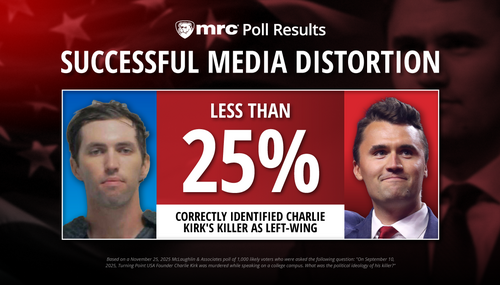The New York Times devoted the latest edition of its fashion mag, T Magazine, to marking the early 1980s in New York City, but used prominent pieces to bash President Ronald Reagan as a "terrifying" Christian-right ogre. From the online introduction:
Everything seemed to be happening at once, and from this blur emerged a culture forever changed -- one whose clashes, laments and modes of being mirror today’s so closely and so eerily that they all but demand a second look. After all, with the inauguration of a conservative president who was no great friend to the arts, or to marginalized groups, including immigrants, the poor and those who fell outside of the conventional all-American family unit.
That would of course be a snide reference to Ronald Reagan and Donald Trump.
One-time White House reporter and current columnist Frank Bruni joined the classless pile-on in the edition’s lead article, using the benefit of hindsight to excoriate the late President on AIDS in “Why Early ’80s New York Matters Today”:
But there were bigger bogeymen to worry about then, Ronald Reagan foremost among them. The outsize reverence for him later obscured how much fear he sowed after he assumed the presidency in 1981 and how much the response to him in the first years of his administration was like the response to Trump now, at least among Americans who hadn’t voted for him.
They considered him a lazy, cavalierly uninformed buffoon. “He doesn’t do his homework,” complained Tip O’Neill, the Democratic House Speaker. “He doesn’t read his briefing papers.” They considered him a fabulist. “If you tell the same story five times, it’s true,” said Larry Speakes, the White House press secretary, defending a seemingly bogus tale about a World War II hero that Reagan repeatedly invoked. They considered him dangerous, with his bellowing about the Soviet Union as an “evil empire,” a phrase he coined in 1983, which is also when he envisioned the elaborate, space-based missile defense system known as “Star Wars.”
And they considered him a fraudulent moral scold. A divorced former movie star who had once bragged about his carnal conquests (sound familiar?), he went out of his way to coddle the Rev. Jerry Falwell and other leaders of what was becoming known as the religious right. He turned “God bless America” into a new staple of political speeches, which had not been so rife with the plea before. He resisted any public utterance of “AIDS” until 1985, which was at least four years into the epidemic and three years after it got its acronym. It had claimed the lives of about 8,000 people in the United States by then.
New York in some ways was a refuge from and retort to all of that. What Reagan wouldn’t even whisper, the city shouted, with protesters imploring the country to pay heed to their legions of friends who were falling ill, and legitimizing a subculture that had largely kept to the shadows but would never be hidden again.
Sarah Schulman also piled on from the gay angle in the second article, “The Art of Protesting – When resistance movements became brands”:
Starting in 1979, when I was 21, I was an out reporter writing for underground queer newspapers, in which I covered key acts of political warfare in New York City. This was the beginning of President Reagan’s terrifying and far-reaching unification with the Christian right. As a particularly despised group of people, queers were fighting police brutality on one front and racist admission policies in gay and lesbian bars on the other, homophobia at home and the closet at work.




